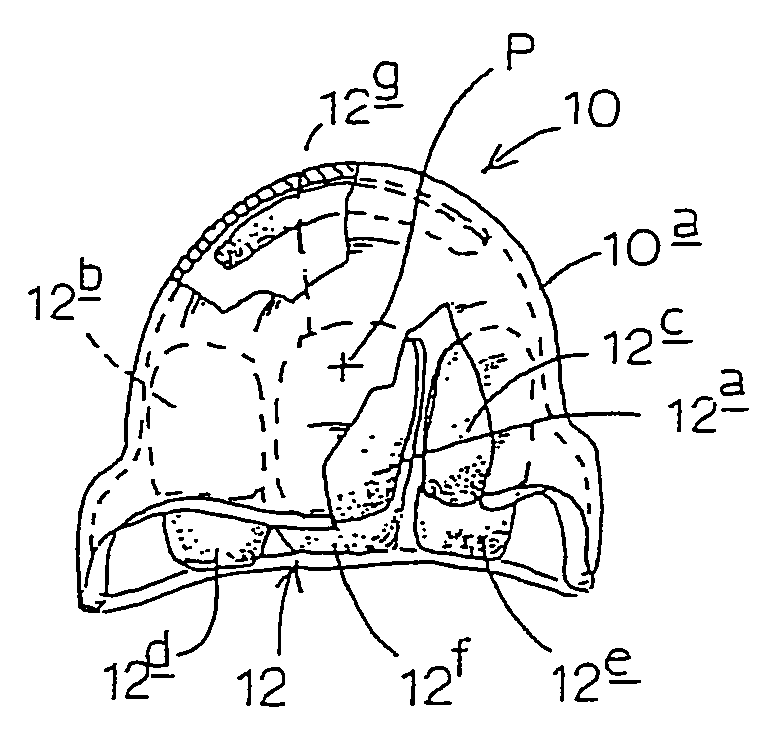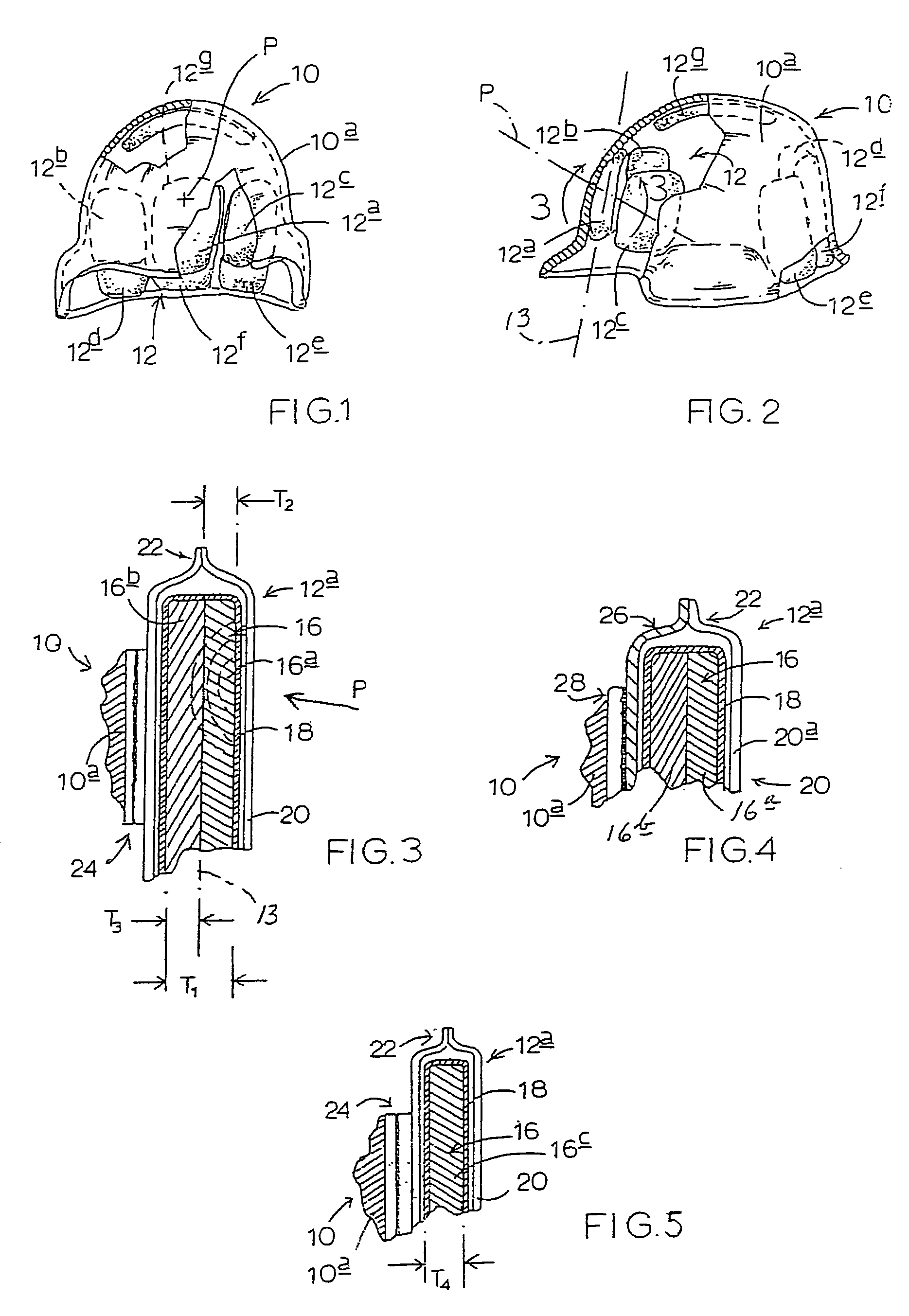Moisture-barriered, body-contact protective interface structure
a protective and cushioning technology, applied in protective garments, transportation and packaging, chemistry apparatus and processes, etc., can solve problems such as discomfort, webbing system, and source of many complaints from users, and achieve unique and very effective response, reduce localized capillary circulation loss, and reduce friction
- Summary
- Abstract
- Description
- Claims
- Application Information
AI Technical Summary
Benefits of technology
Problems solved by technology
Method used
Image
Examples
Embodiment Construction
[0022] Turning attention now to FIGS. 1, 2 and 3, indicated generally at 10 (FIGS. 1 and 2) is a military helmet including a shell 10a. In all respects, shell 10a is completely conventional in construction, and might have any one of a number of different specific constructions and configurations. Fastened in a manner that will shortly be described on the inside, concave, dome-like wall of shell 10a is an installation 12 of body-contacting interface structure constructed in accordance with the present invention. Installation 12, in the particular setting illustrated in these figures and now being described, includes seven, individual, multi-layer, cushioning, interface-structure pads 12a, 12b, 12c, 12d, 12e, 12f, 12g, each of which is constructed with one preferred form of a layered-assembly organization proposed by the present invention. Each such pad is also referred to herein as a body-contacting, expanse-like cushioning structure. Pad 12a is joined to the inside wall of shell 10a...
PUM
| Property | Measurement | Unit |
|---|---|---|
| structure | aaaaa | aaaaa |
| viscoelastic | aaaaa | aaaaa |
| acceleration-rate-sensitive | aaaaa | aaaaa |
Abstract
Description
Claims
Application Information
 Login to View More
Login to View More - R&D
- Intellectual Property
- Life Sciences
- Materials
- Tech Scout
- Unparalleled Data Quality
- Higher Quality Content
- 60% Fewer Hallucinations
Browse by: Latest US Patents, China's latest patents, Technical Efficacy Thesaurus, Application Domain, Technology Topic, Popular Technical Reports.
© 2025 PatSnap. All rights reserved.Legal|Privacy policy|Modern Slavery Act Transparency Statement|Sitemap|About US| Contact US: help@patsnap.com


